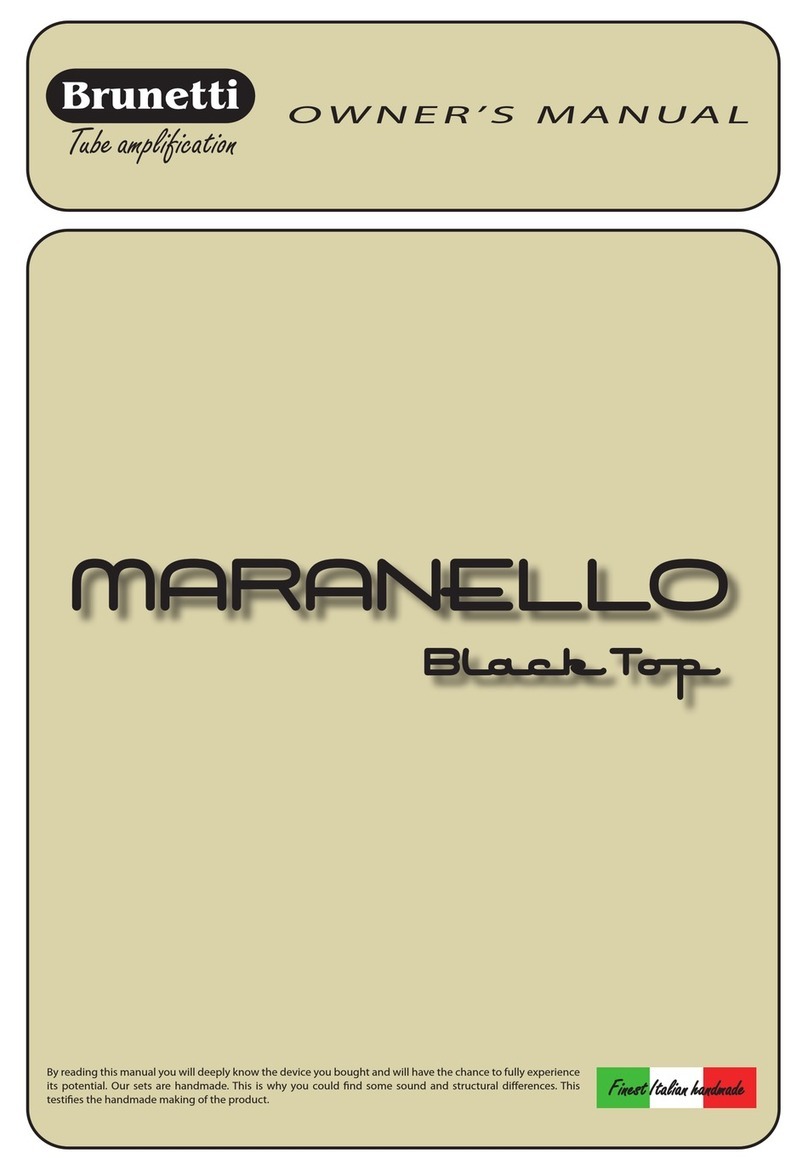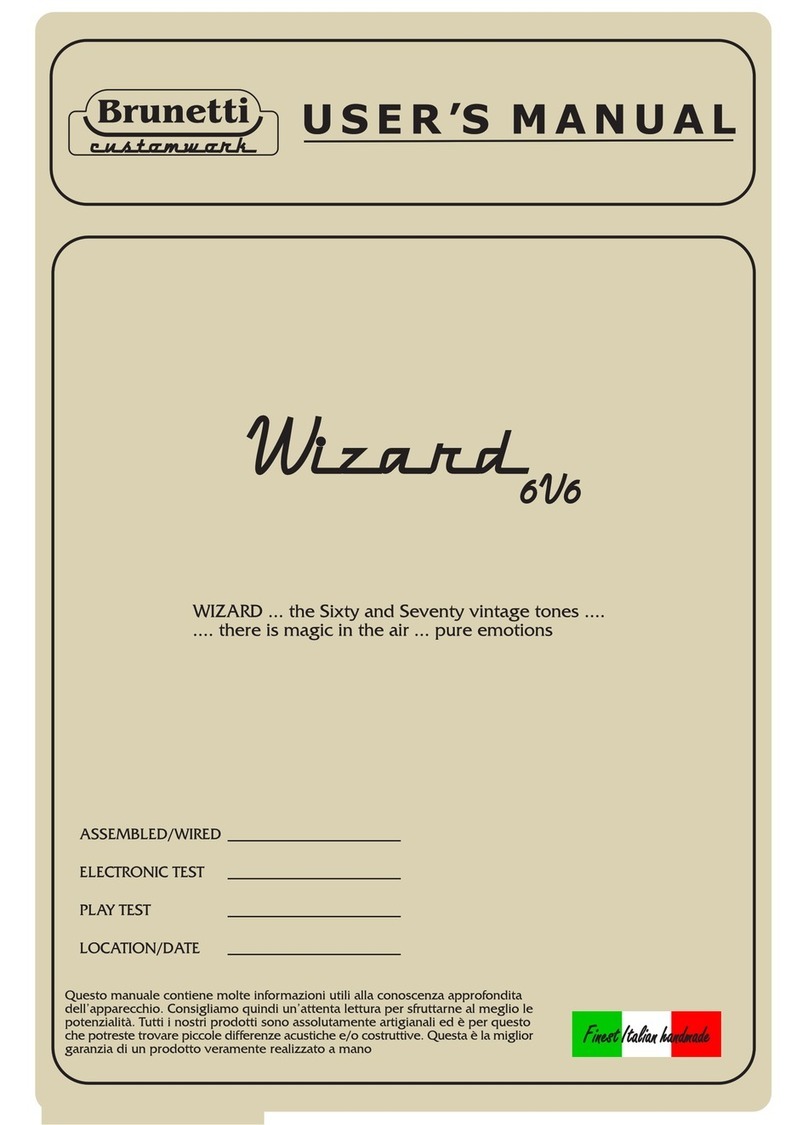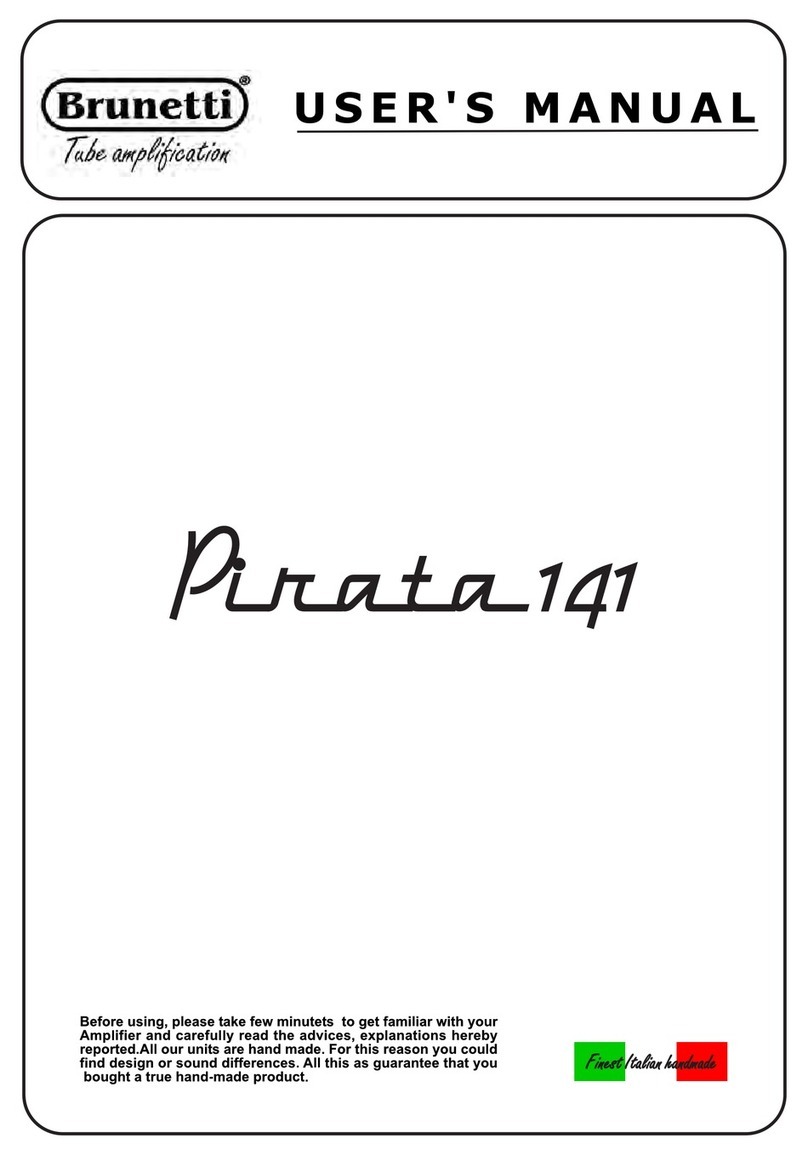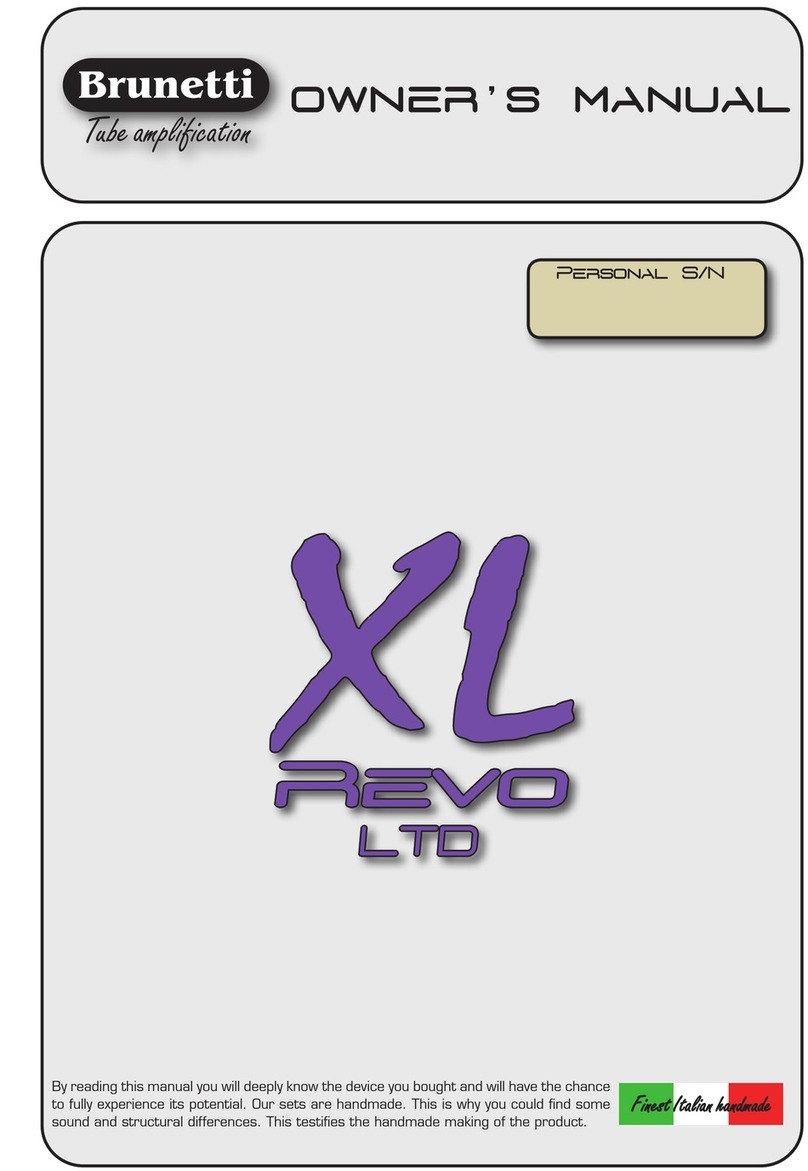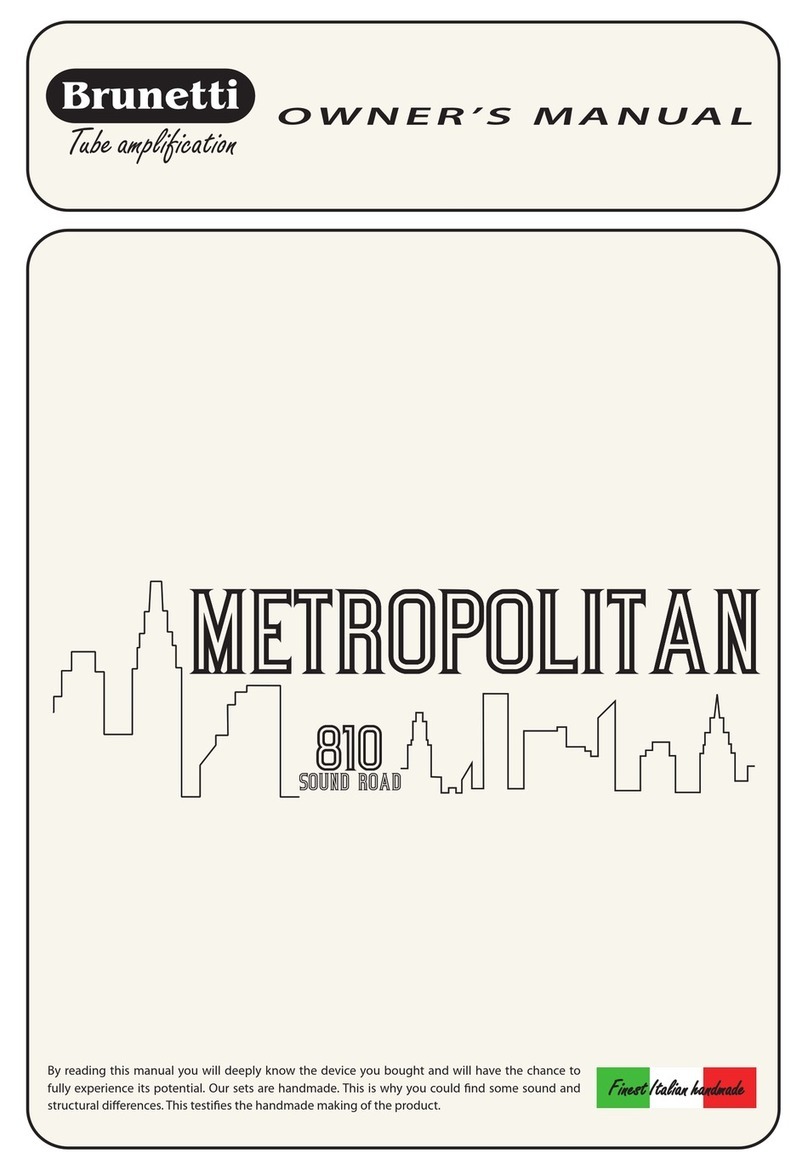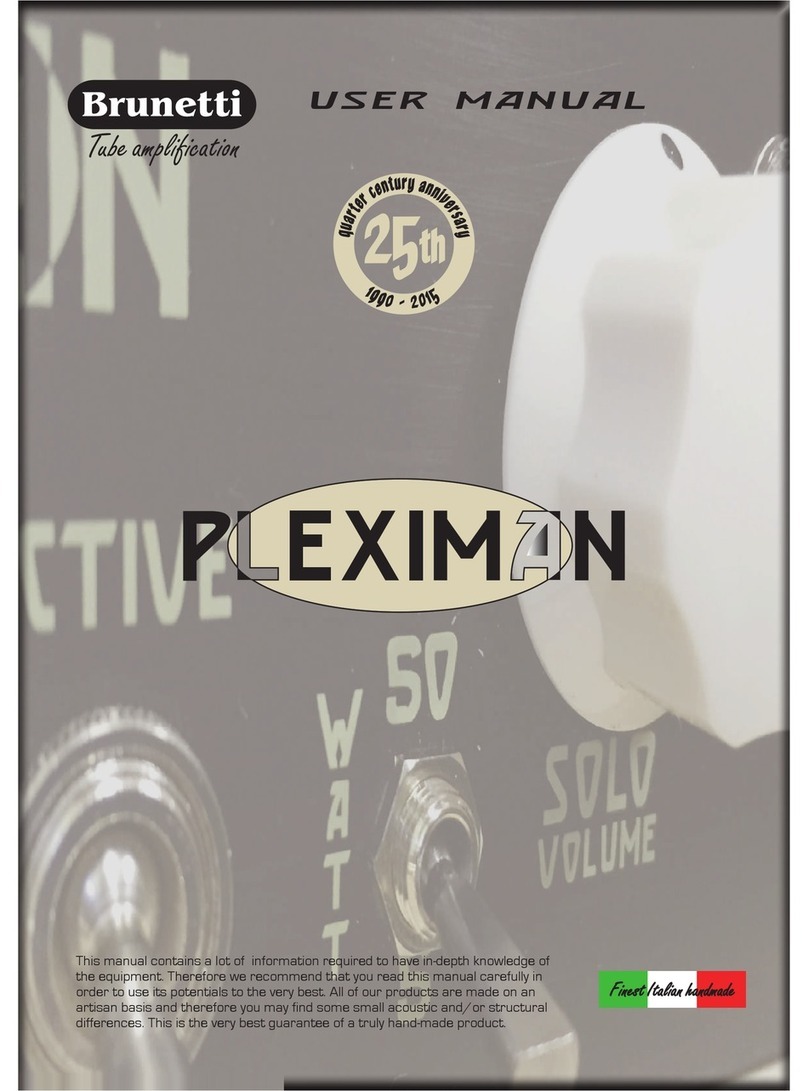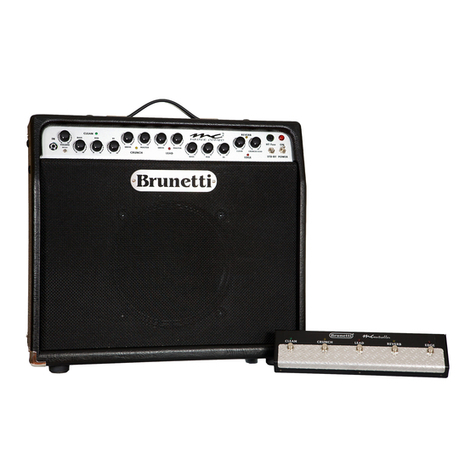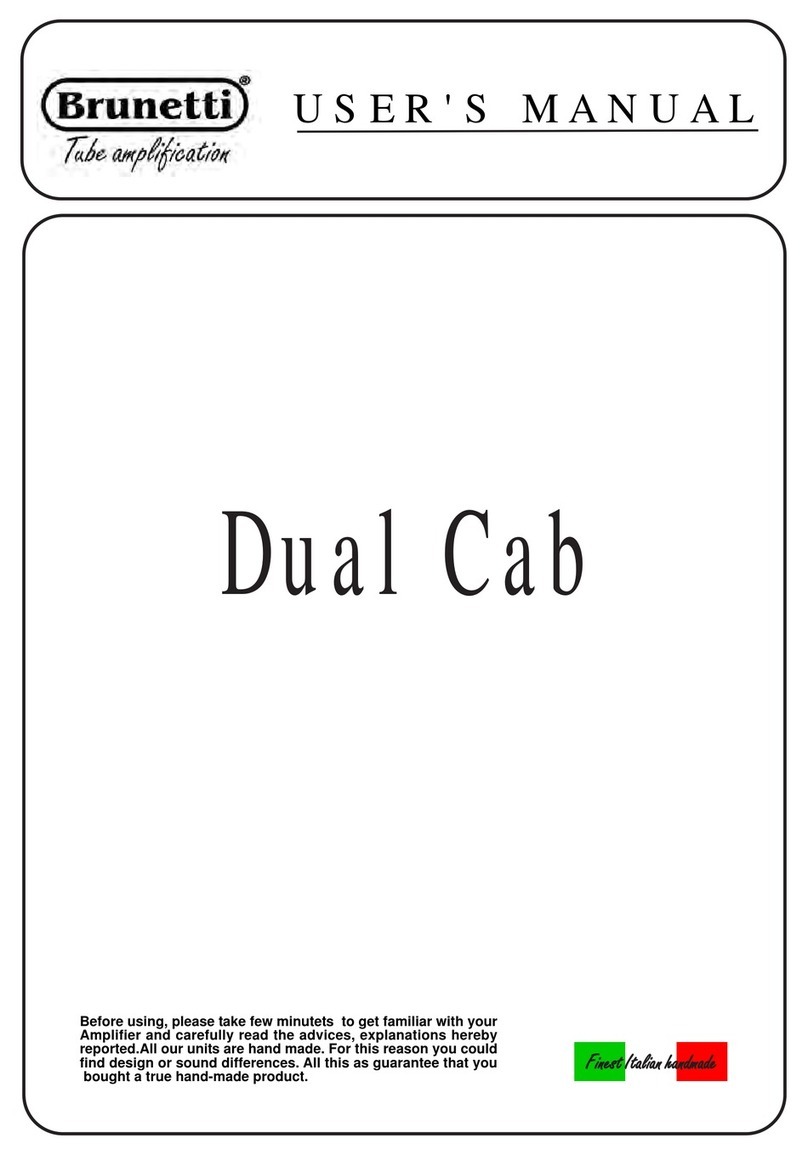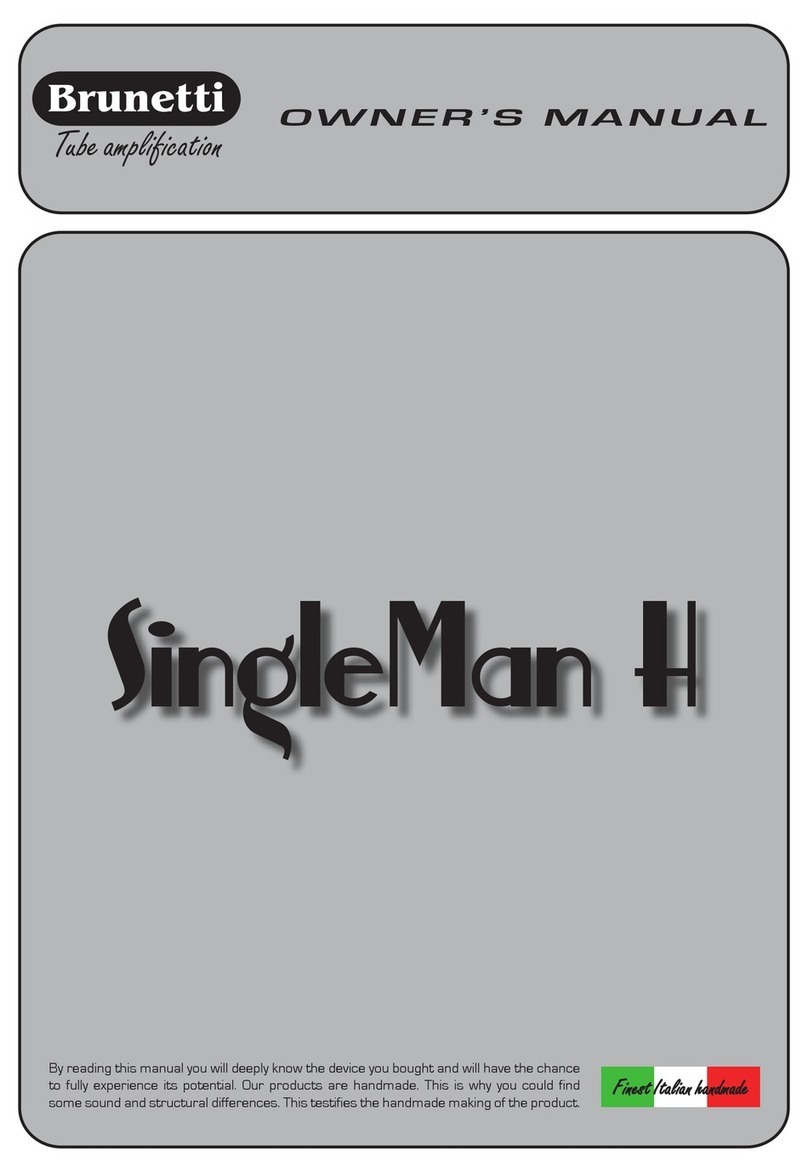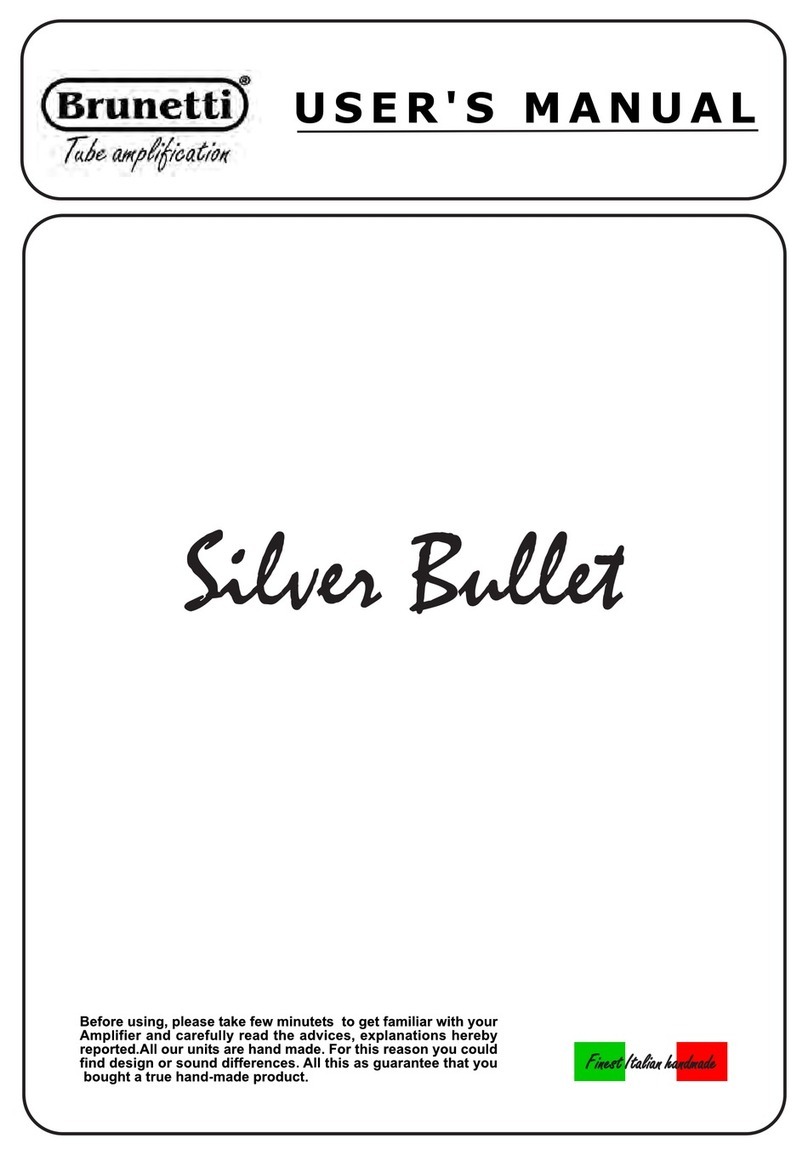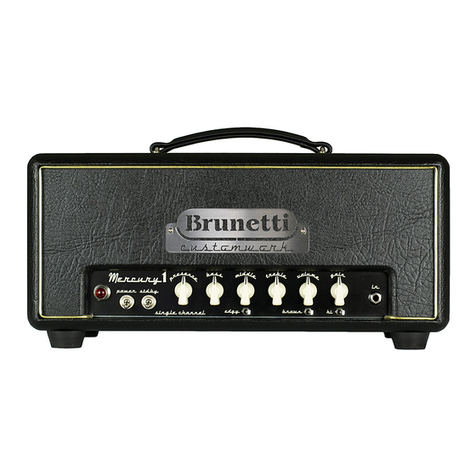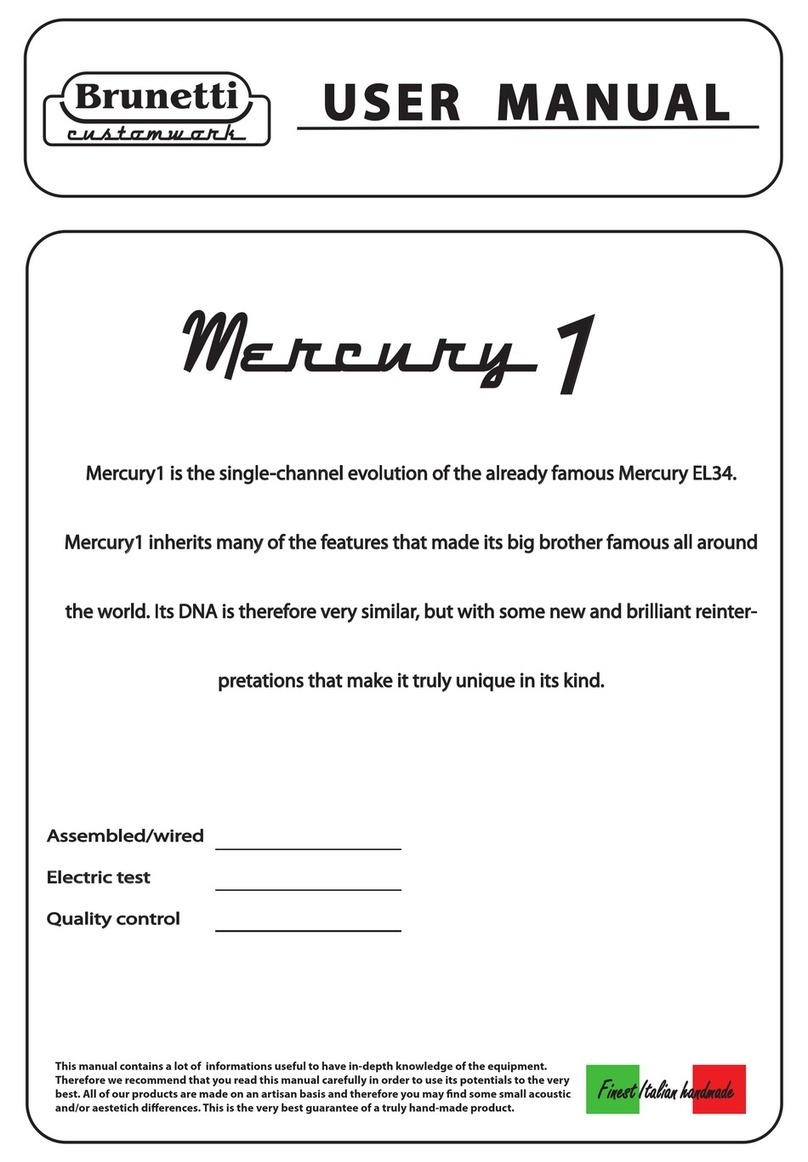
EFFECTS LOOP
SWITCHING
You can operate the channels and the functions of your MILLE CR in manual or MIDI mode. In addition to the
“light” functions previously explained, the manual system enables to switch the BRIGHT on the CLEAN channel
and the RAW on the CRUNCH channel. The MIDI mode is exclusively dedicated to the functions you can set
through the light push-buttons.
MIDI
The MILLE CR can operate the different “light” functions thanks to a standard MIDI pedalboard that sends a
program change through one of the 16 channels (all MIDI pedalboards on sale have this function). The MILLE
CR receives the program changes through the OMNI channel, i.e. sent by all MIDI channels (1 -16).
The MIDI THRU connection can send the received MIDI signal to other MIDI devices. The MIDI input is a 7 poles
Din that performs two main duties: it receives the MIDI signal and provides a 12Vdc/200mA voltage (on pin 6
& 7) useful to supply power to a MIDI pedalboard compatible with this function (WARNING: please respect the
voltage, the maximum power levels and the polarity).
STORING PROGRAMS THROUGH EXTERNAL MIDI PEDALBOARD
Please, follow this procedure to store the setting to be recalled by MIDI:
- Select the preset you want to use on your pedalboard (ex. 01)
- Select the channel (or the combination of functions) you prefer on your MILLE CR (ex. Lead + Step-up).
- Press the “light” button of the selected channel (CLEAN, CRUNCH or LEAD), hold on until the STEP-UP/STORE
led ashes to conrm the storage completed.
- When you recall the preset on the MIDI pedalboard the preamp will act accordingly.
On the effect section of the rear panel you can nd SEND, RETURN L and R, SERIAL/PARALLEL and STOMPS/
RACK switches.
SEND is the output connection to send signals to the effect input. It has been conceived for pedal effects
(STOMP) or rack unit effects (RACK). Its level ts all systems on sale.
RETURN L and R are the input connections taking back the signal processed by the effect to the internal mixer
(PARALLEL position), where it will be mixed at 50% with the direct signal and to the FLAT/EMULATED outputs or
(SERIAL position) directly to the FLAT/EMULATED outputs. If the effect is mono, use SEND, RETURN L and FLAT/
EMULATED L outputs.
For all connections in the LOOP section, use only very short shielded cables of high quality. Remember also
that whatever effect will modify the original timbre of the amplier, depending on the quality of the system/
device you employ.
STOMP EFFECTS
Connect only modulation (or ambient) effects to the loop, like chorus, anger, delay, reverb, etc. to obtain
the best sound performance. Flip the SERIAL/PARALLEL switch to the SERIAL position (selecting serial loop): the
signal will pass entirely in the effects connected to the loop. Modulation pedals are normally equipped with a
Level or Mix control to be adjusted according to how much effect you want to add. DO NOT reach too high
MASTER volumes, to avoid saturation of the effects in the loop.
RACK EFFECTS
When you connect digital rack effects, switch your loop in PARALLEL position, thus leaving out the direct signal
(Dry) from the effect. You can control the mixing of preamp sound (Dry) with effect (Wet) without any change
in the original preamp sound and decreasing the loss of quality due to the digital conversion by the multieffect
unit. The IN level of the effect must be adequated to the real volumes you reach with your preamp checking
that the signal sent by SEND does not saturate the effect. To achieve a good balance between volume and
effects level you have to adjust the output volume of the effect too.
